In terms of physical implementation, we have an endless stream of good knowledge, theory, and practice for building sustainable, nature-inclusive cities; a collection reaching back for well over a century.
What’s missing, I would argue, are not methods and knowledge, but a consciousness of our relationship to the environment, one which supports a consistently growing integration of nature into our urban agenda.
With this consciousness would come the ultimately necessary understanding of how culture and nature fit together to form the basis of an ecologically connected society. This is not an understanding ecologists alone should hold; it is one which on some level or another, all citizens need to carry with themselves in order for any serious attempt at inserting ‘nature’ into a city can truly be considered successful. This consciousness would essentially flip our common mantra of “how does nature fit into the city” into a “how does city fit into and with nature” way of thinking.
I am not an urban planner, academic, or landscape architect; but rather an artist who likes to work with these types of folks. My work straddles rural and urban in attempts to find ways of temporarily unplugging people from their world of economic and political logic, and expanding their consciousness of the reality of the local, regional, and global natural systems which support them.
With this in mind, I would like to use a recent experience of leading a social / ecological art project on Megijima, a small Japanese island with just 130 inhabitants, to ask: what can we learn about urban nature from the loss of traditional culture?
The following writing includes a rather informal dissemination of the ecological and social transformations on this small island, and related suggestions as to how the understanding of such transformations could help us look differently at how nature might fit within the consciousness of contemporary culture. Rather than offering answers, it offers a loose framework for thinking about urban nature issues in a new context, and I hope readers may contribute their own answers and additions to the concept.
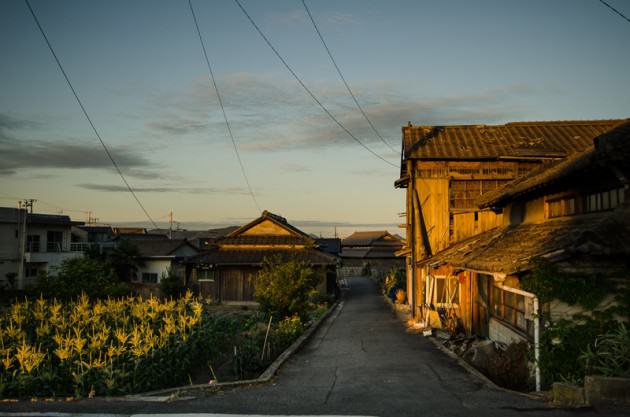
We titled the project in Megijima Island [Human:Nature]; it was a three month experimental residency which was bravely sponsored by Aichi University of the Arts and the Setouchi International Triennale, as well as the University of Edinburgh, where I was studying in the Art, Space & Nature MFA program at the time.
Our work took place during the hot and sticky summer months, and consisted of interviewing all of the willing residents about the island’s history, family, agriculture, and most importantly, about the importance of their connection with the environment. These interviews were turned into a site-specific digital artwork which allowed users to navigate relationships between people, culture, and nature.
To give a brief portrait, the island of Megijima is a physically small piece of land, small enough to be jogged around in just a few hours. The island is situated between Mainland Japan’s Okayama Prefecture on the East, and Shikoku Island on the West, in what is referred to as the Seto Inland Sea.
Natural forest and farmland covers the majority of the island, making it a spectacular example of Japanese nature in this region, yet it’s also only a 20-minute ferry ride from the city of Takmatsu, a city of half a million, and one which includes Megijima in its administrative jurisdiction.
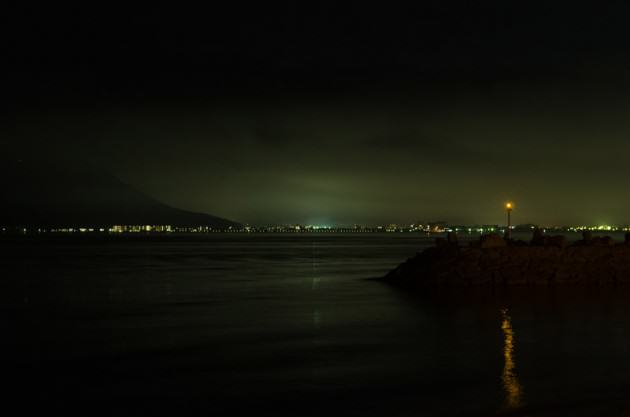
Shigeko Yokohama, who runs the island’s tourism office, offered us the view that “Seeing Takamatsu City from Megijima creates a strong contrast between a modern Japanese city, and the serenity of a traditional country… where the beauty and power of both environments are enhanced.”
You could argue that, both physically and culturally, Megijima occupies a liminal space between the modern and the historical, and also between the urban and the natural. Indeed it sees its share of all of this in waves throughout the year.
In the past few decades, however, the ‘traditional’ waves of the past have been smaller, and the peoples’ culture and connection with their environment has found itself to be quite incompatible with the ideologies of modern Japan.
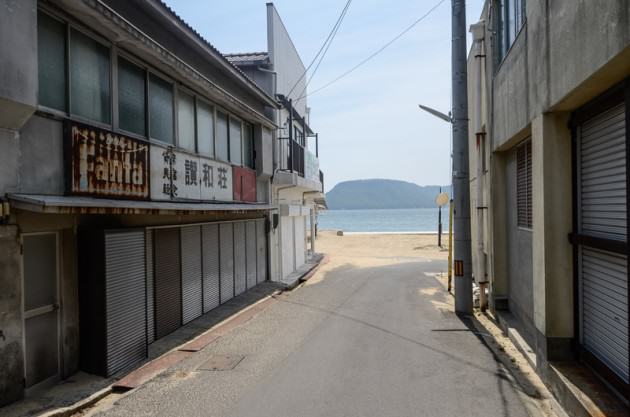
As we interviewed individuals, we saw a recurring theme: several centuries of a flourishing local culture, paired with a deeply rooted cooperation between human and environment on this small island was literally slipping away before the eyes of its inhabitants.
To make a point of the disappearing culture, the island’s semi-annual Matsuri (festival) has just this year seen its last celebration.
This festival, which we were privileged to see and take part in as foreign guests, sees the island’s extended families gather to carry out their own brand of religious and cultural festivities – in a general sense, to celebrate the harvest, banish evil from the island, invigorate the youth, bring prosperity, and other cultural rites which were once commonplace in most towns and villages in Japan.
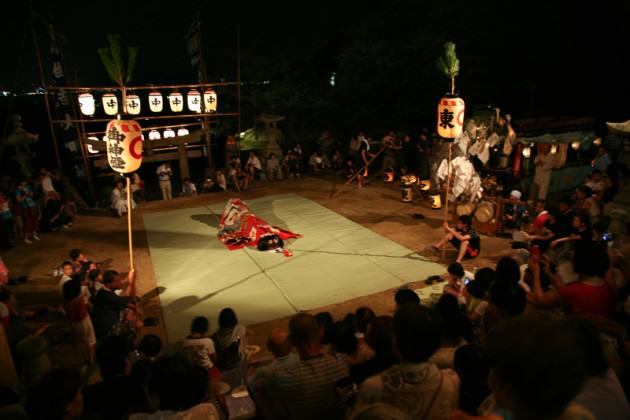
The island’s youth are the center of much of this festival, which in and of itself presents one of the biggest problems for the festival – and the island. On any given day, you’ll be able to count the young people living on the island of Megijima on one hand, if you’re lucky.
This creates some obvious issues with maintaining such cultural events here, and also in maintaining any sort of vibrant community.
For the weeks leading up to the festival, the island temporarily brought enough Megijima relatives back to easily triple the island’s population, most of whom had long since moved off to the big cities and in some cases had started families of their own.
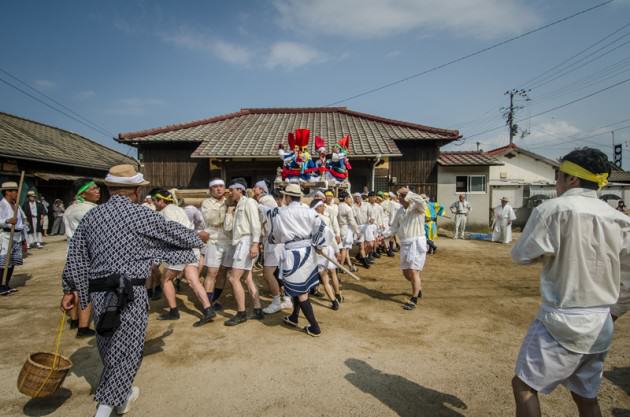
Even still, there was a large shortage of young men, whose physical work in parading a giant wooden float around the island for two days is a necessity of the festival. Due to this shortage in manpower, the island was forced to import volunteers from nearby cities. The festival went on, and it was two days of only-in-Megijima moments; magical temples lit through painted lanterns, boisterous sake-filled celebrations, nightime dragon dances, where quarters of the town faced off in dynamic fashion, and a series of deeply rooted traditional rites for youth and elders.
According to local leadership on Megijima, this was the last time the festival would be held.
The loss of such cultural tradition is not isolated; it’s widespread across Japan and most of the industrialized world, and when we look at it deeply, we begin to see rather clearly that both the disappearance of tradition, and ecological degradation, are two victims of a single cultural deficiency.
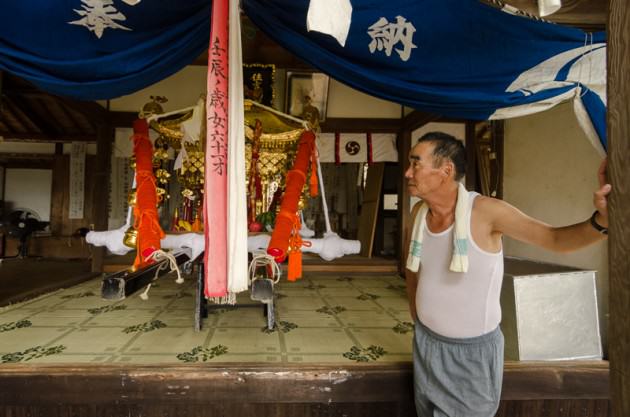
During the two months we spent on Megijima, we interviewed around 30 families and found that many of their stories mirrored what is happening throughout Japan: young people grow up, they want to experience the fast-paced city life; they leave the small towns and become deeply embedded in what is one of the world’s most hard-working business-centric lifestyles. A lifestyle which is not only devoid of connection to the roots of their personal culture, but also to their roots in nature.
That is to say, nature isn’t culturally valued outside of their towns and traditional cultures.
In particular, as Japan’s rural population is dwindling, its cultural heritage is disappearing, as are the small agricultural and fishing towns once iconic of this country. And silently, along with it all, a historically resilient and well-rooted environmental agenda is disappearing as well.
While the disappearance of cultural heritage is rarely connected to issues like resource depletion, pollution, or land degradation, I would argue – in a most urgent way – that it certainly should be.
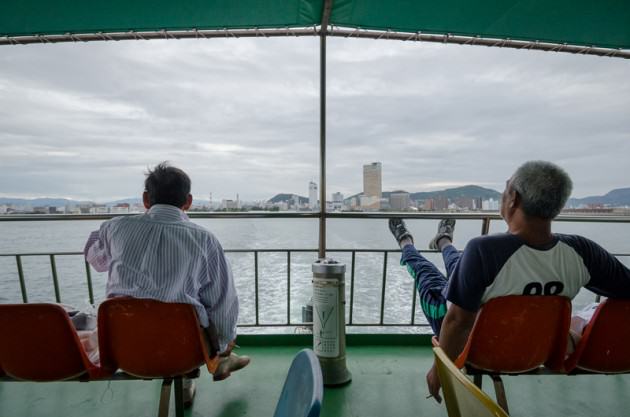
Amid all of these changes, the sensitivity of Megijima’s aging denizens to the island’s environment has remained especially well tuned.
I am reminded of our first visit with the island leadership as we began preparation for our project. The meeting was held in a small home, flanked by other small homes on two sides, and a dense forest ascending nearly vertically up into the hillside behind it. Here, we were told by the island’s community leaders that in recent history, Megijima has seen the vitality of the forest and land dwindle, and along with it, the life of the surrounding sea.
From their point of view, the health of this small piece of land, which once flourished with forest, farm, and social life, also gives life to the surrounding ocean, and the ocean back again to it. It’s a continuous cycle, they told us, where cultural life, ecological life, land, and sea are all inextricably interconnected.
It is also a cycle that has been disrupted, by a cultural missing link, a disconnection and mass exodus of youth, and a subsequent lack of care for the immediate and surrounding environment.
It is important to note here, that in Megijima in particular – as in Japan in general – there is a culture of sacred and deep-rooted spiritual connection to the environment, which was very much evident in talking with the population of this island. It is a connection which, as Japan Social and Ecological scholar Allan Grapard once wrote, forces a “continuous examination of nature from the point of view of culture, and of culture from the point of view of nature.”
Today, this connection is held almost exclusively within the retired population.
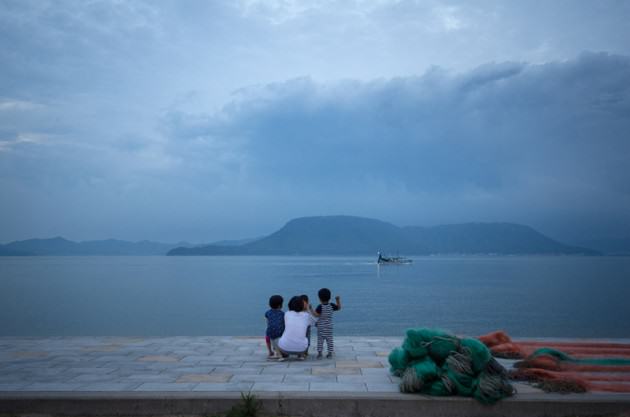
The main industry on Megijima was once its agriculture, which over the years centered variously around dairy, tobacco, rice, and peanuts. Today there is a single rice farm left here, several dozen small-scale gardens and farms, an orange orchard, and a fishing industry consisting of several individual fishermen in small boats.
The rice farmer, Masakatsu Nakamura, runs what is the last agricultural operation of any significant scale, and even then, much of his harvest goes to feed his extended family, who are spread throughout the country.
“It is not about money,” Nakamura told us in reference to his single-person rice farming operation. “It is about affection, and this affection can be expressed through the food that we grow and share. For my family, our rice field is a very significant place, both to find peace and to connect.”
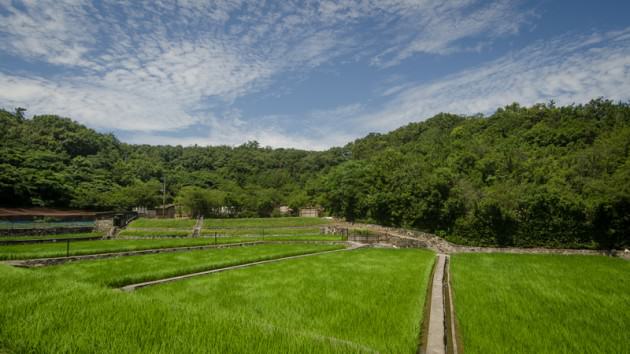
In a short 50 years, Nakamura the rice farmer has gone from being one of many, to quite literally, the only one.
Today, the residents of Megijima still enjoy the simple beauty of the island’s natural setting, talking of cherry blossoms, sitting beneath the expanse of stars, and the subtle sound and light of nearby Takmatsu as it’s carried across the water to mingle with Megijima’s thick forested hills and resident inoshishi (wild boars).
They talk of the love they have for the land, for their small farms with expansive views, for the neighbors who are still around on this island where the youngest farmer is a spry 70-years young.
All of it is talked about with great passion, and more often a smile than a sigh.
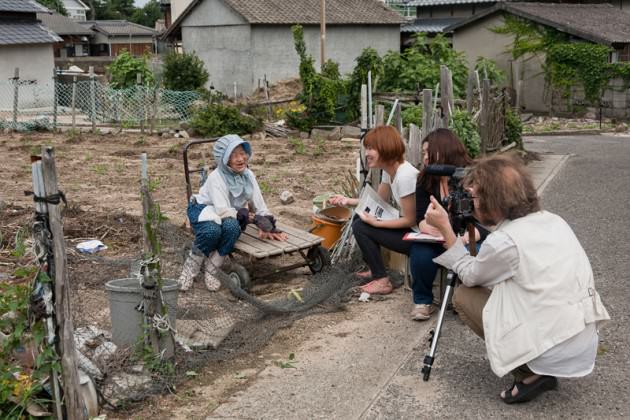
But along with its ever-increasing average age, the days of a vibrant local community have long since passed, and when speaking of the future, the locals see little to no hope that current efforts by the city or cultural organizations such as the Setouchi Triennale (Art Festival) will make much of a difference.
To this, we argued that the arts festival brought us here, so at least we can share their stories and help islanders and visitors make new connections. For that, the local people seemed to at least smile and nod; most were unbelievably supportive of our work.
As we left the island, so did the steady stream of art tourists, and life continued for the people of Megijima. For a 90-year-old woman who still works in her field each day and still enjoys a local beer each night, for the lone family who finds creative ways to bring their children up close to the island, and for the one remaining rice farmer dedicated to keeping his family together through the grain he grows.
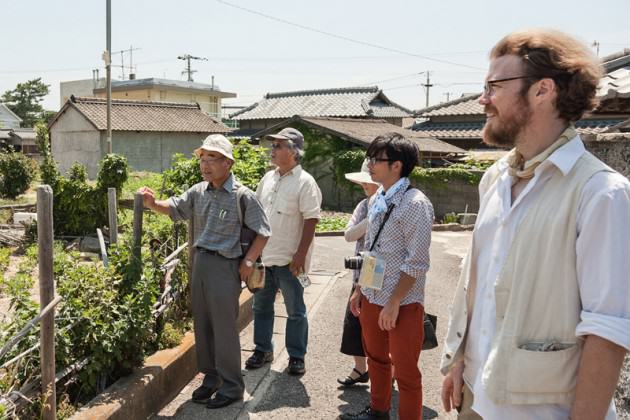
I suppose that the hope for this island — the same for anywhere on this earth, island, town, or city — is not that we’ll go back to old rituals, isolated agrarian villages, and storied culture to live it again. We are far beyond that and by most accounts there seems little point to it.
The hope is that we might plant the seeds for a new culture with roots deep enough that we can grow to understand, learn from, and live with our past culture as an informant to future versions of what that culture could be.
There are a substantial yet dwindling number of places like Megijima around the world, and I would put forward to you that these are important and largely undervalued places to learn lessons for ecologically-sound settlements, if only because the lessons are all right there, concentrated, highly visible, at the intersection of modern and historical words.
I would put forward that there are lessons for mega cities within small, historically-rooted communities at the liminal space between two very polarized ways of life; that there is value in viscerally assessing the importance of human-nature connections at individual and community scale, or in engaging a geographically identifiable culture of which a single generation has lived through nearly the entire process of modern development.
Comparatively, much of our current urban culture has almost no awareness of nature; we don’t know nature deeply, we don’t know the extent to which it exists, or what it does for us. It is rare today, that we ever come into contact with nature in an honest and thoughtful way.
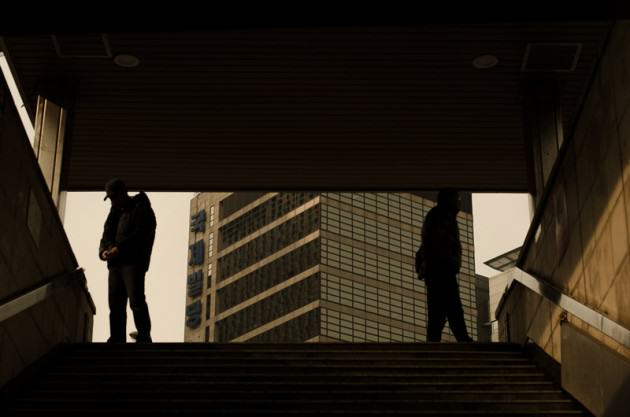
Yet this thoughtful connection is arguably a big part of why semi-isolated places like Megijima have been ecologically successful for centuries; a depth of understanding of nature and constant connection to it. These places have built a very good basis for putting into practice the “how does city fit into and with nature” mantra.
Establishing such a relationship with nature takes time and constant work to build, and conversely, relatively little time to completely destroy. It is not really something you can make an informational poster about, or a one-time event, or even a beautiful city master plan, because these outputs do not themselves necessitate such a depth of connection, they only varyingly make attempts to encourage it.
In this realm, perhaps success isn’t dependent so much on the design, or its physical manifestation, but on the culture which inhabits this physical manifestation.
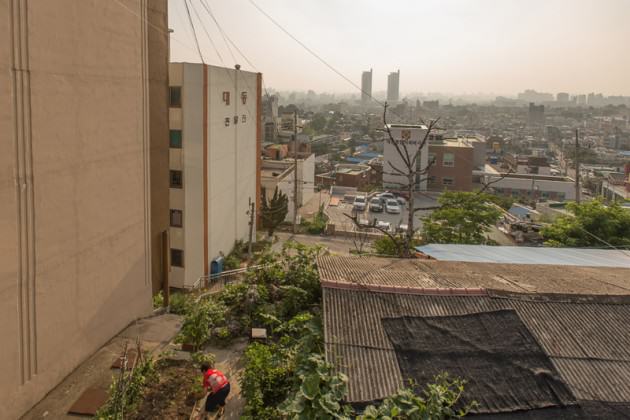
By example I can think of large cities Korea where something we urbanists call ‘guerrilla gardening’ is simply a normal act ingrained in the culture; a part of life which never really went away in the move from rural to urban. In the most tightly packed urban centers — and I mean places where no one might ever think to plant anything — little old Korean women fit dozens of small garden plots.
Their city wasn’t built for nature, but their individual and collective culture was.
For those communities who have been long disconnected from nature, making the cultural case for nature within cities is slightly more involved; the case for urban nature must be, for lack of softer terminology, both invasive and omnipresent in the lives of citizens, business owners, and elected officials. In these communities, one could say that we face the task of building a completely new culture of respect for and connection to nature.
This could mean political forums held in nature, it could mean more structured open space requirements which include gardens and farms as a percentage of development, or it could involve the sponsoring of artists, ecologists, and activists to regularly engage locals on issues of their ‘neighborhood’ ecology, building some relevant local recognition for — and connection to — local natural features such as watersheds, meadows, gardens, and forests.
Or, it could be vastly more simple.
In the end, perhaps habitually, putting ourselves (and our children and our elected leaders) in constant and meaningful contact with nature — with no tactical agenda to speak of — offers us a way forward.
A slow, constant, growing way forward.
Patrick Lydon
San Jose & Seoul


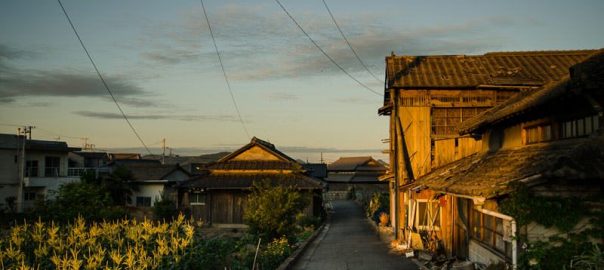
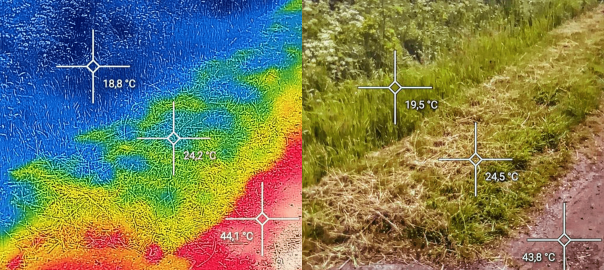
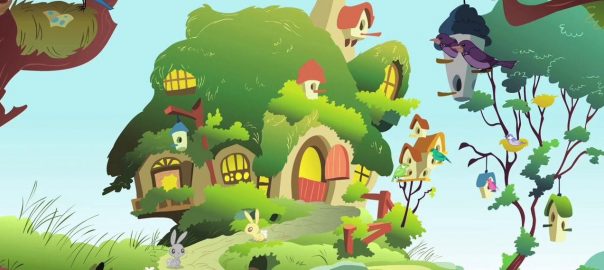
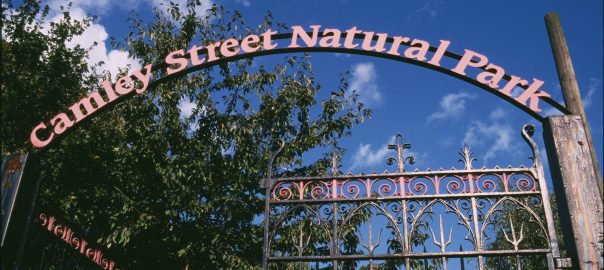
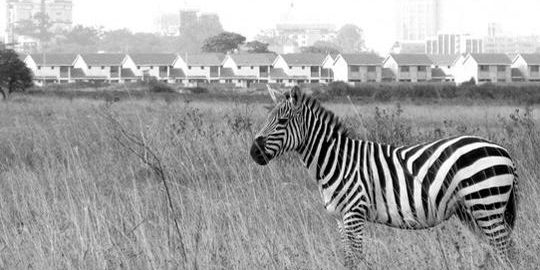
Leave a Reply